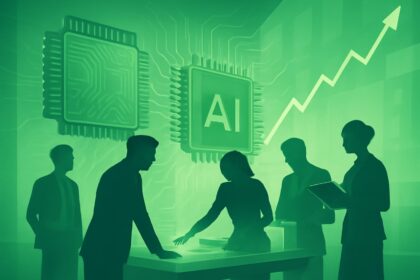Amazon to Lay Off 14,000 Corporate Employees Amid Strategic Restructuring
Amazon announced on Tuesday it will cut approximately 14,000 corporate jobs as part of an ongoing effort to reduce costs and reorganize for greater agility. The layoffs represent about 4% of Amazon’s corporate and tech workforce and are the largest in the company’s history. The company emphasized that these reductions are intended to create a leaner structure with fewer management layers and increased ownership, enabling faster innovation especially in areas such as generative artificial intelligence (AI).
Focus on Generative AI and Innovation
Beth Galetti, Amazon’s senior vice president of people experience and technology, described the current AI wave as the most transformative technology since the internet. The company plans to prioritize investments in AI and cloud infrastructure to remain competitive.
“This generation of AI is the most transformative technology we’ve seen since the Internet, and it’s enabling companies to innovate much faster than ever before,” said Galetti. “We need to be organized more leanly, with fewer layers and more ownership, to move as quickly as possible for our customers and businesses.”
Layoffs are expected to impact nearly every corporate division, including cloud computing, grocery, video games, human resources, sustainability, communications, advertising, and devices.
Scale of Workforce and Layoffs
Amazon is the second-largest private employer in the U.S., with over 1.54 million employees worldwide, most of whom work in warehouses. Its corporate and technology workforce numbers approximately 350,000. The 14,000 job cuts represent a relatively small portion of the total workforce but mark a significant reduction in corporate roles. Reports suggest the total cuts may rise to 30,000 in coming months. Despite the layoffs, Amazon plans to continue hiring in strategic growth areas, including fulfillment and transportation roles for the holiday season.
Broader Industry Trend Toward AI-Driven Workforce Changes
Amazon’s cuts reflect a wider trend where companies across technology, finance, automotive, and retail sectors are adjusting headcounts in response to AI advancements. Many firms anticipate being able to grow revenues with fewer employees by leveraging AI-driven efficiencies.
- Meta recently reduced its AI staff by approximately 600 employees to streamline operations.
- Microsoft cut over 15,000 jobs this year, emphasizing a strategic pivot toward AI.
- Google reduced managerial layers by 35% to accelerate decision-making.
Amazon CEO Andy Jassy has acknowledged that generative AI will reduce the need for some job functions while creating demand for new roles aligned with emerging technologies.
“We will need fewer people doing some of the jobs that are being done today, and more people doing other types of jobs,” Jassy stated in June.
Cultural Overhaul and Operational Streamlining
Since becoming CEO in 2021, Jassy has spearheaded a company-wide cost reduction campaign and cultural transformation aimed at flattening organizational structure and reducing bureaucracy. Last year, Amazon instituted a strict in-office attendance policy requiring corporate employees to work on-site five days per week. The company also aims to operate more like a startup to enhance speed and competitiveness. Amazon’s investment plans include $118 billion this year targeting AI development and cloud infrastructure, signaling a strong commitment to future technology leadership despite workforce cuts.
Financial Implications and Upcoming Earnings
The layoffs follow a hiring surge during the Covid-19 pandemic that expanded Amazon’s workforce to meet demand spikes in e-commerce and cloud services. Amazon is scheduled to release its third-quarter earnings after market close on Thursday, an update closely watched for insights on growth prospects amid restructuring.
FinOracleAI — Market View
Amazon’s announcement to reduce its corporate workforce while prioritizing AI investments highlights a strategic pivot to future-proof its business model. The company aims to balance cost discipline with innovation to sustain its competitive edge.
- Opportunities: Accelerated AI integration can drive productivity and open new revenue streams.
- Risks: Layoffs may impact employee morale and slow down projects during transition.
- Market Position: Continued investment in AI and cloud infrastructure is essential to keep pace with rivals like Microsoft and Google.
- Operational Efficiency: Flattening hierarchy could improve agility but requires careful change management.
Impact: Neutral to positive. While layoffs pose short-term challenges, Amazon’s focused investment in AI and streamlined operations position it well for long-term growth in a rapidly evolving tech landscape.













